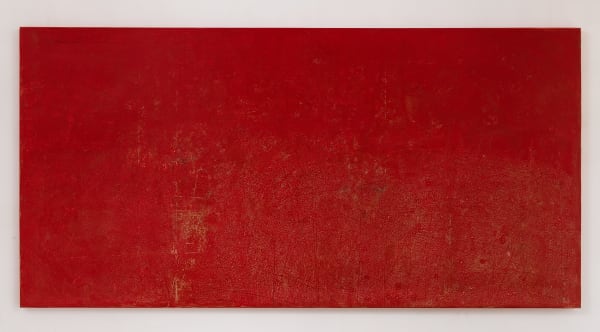new canvases: Sheetal Gattani
Sheetal Gattani is a painter of uncertainty, of suspense, of adventure. Her canvases contain over twenty-five to thirty layers; employing an abstractionist language to invoke a rhythmical interplay of textures and colors, and go beyond to also feature subtle geometric or architectural reveries.
She starts on a black acrylic ground, absorbed in the present moment, working on the floor of her studio for several hours at a time. Rather than assuming the traditional method of using a brush to apply paint, she colors pieces of handmade paper, then presses them against the unstretched canvas to transfer paint from one surface to another. Repeating this technique she drenches her canvas, color after color, until they explode, dissolve and intermingle. If she goes too far, she starts over, wiping away and subtracting, until layers are fused, colors are blended, and all hierarchies are denied to give way to the new seamless field of hues. Once dry, she mounts the roll around beveled-edge stretchers, transforming the formerly two-dimensional painting into a sculptural format.
While Gattani’s paintings appear monochromatic from a distance, a closer engagement reveals hints of underpaints that burst, tear, or bleed through, to disrupt the seeming precedence of the dominant colors. Areas of crimson merge into warm orange, before softening into gold, behind it a spectrum of incredible combinations lie: what was here before? Brilliant greens, deep umbers or creamy pinks? Viewers are thus invited to excavate the ostensibly flat surfaces, and discover the numerous micro incidents and appearances that live underneath. Several coats later, the surface is such, that the painting can no longer be seen as a canvas holding color: but becomes color in and of itself. The artist provides a stage for chance, for the materials to make their way and have their influence. Impressions from the paper’s fibrous textures and grain are introduced amongst the paint, as she allows the paper to function as her brush. Each paper square becomes a record, together an index to the individual colors that made up the larger paintings.
Extracts from an essay by Pooja Savansukha







